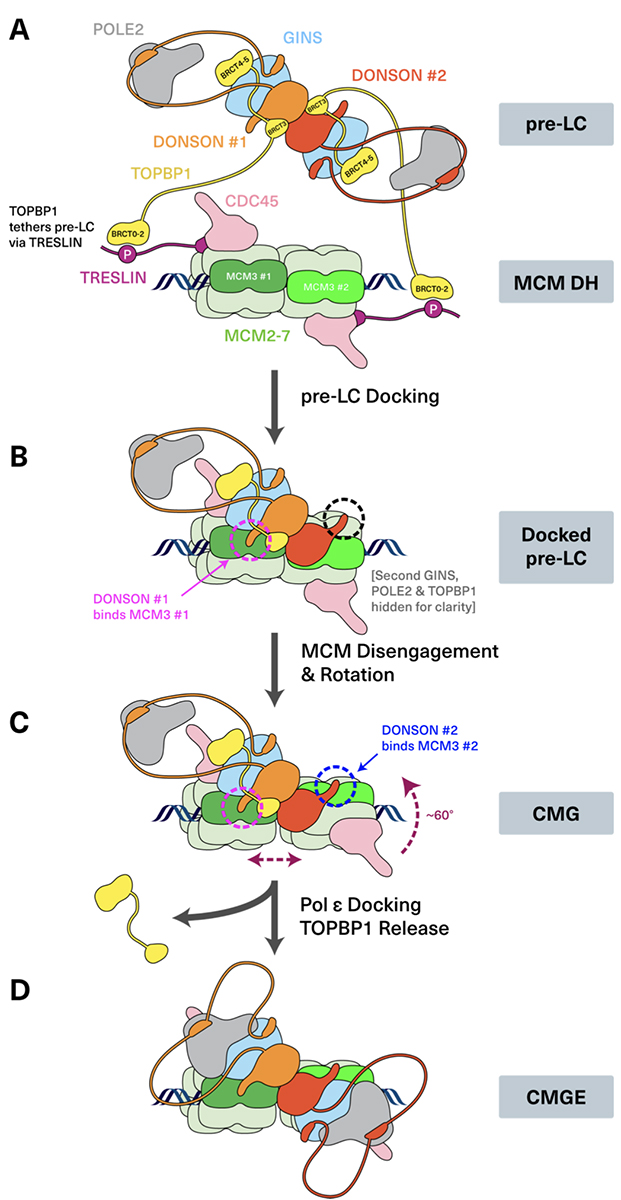Identifying a protein essential for replication initiation
Kanemaki Group / Molecular Cell Engineering Laboratory
In silico protein interaction screening uncovers DONSON’s role in replication initiation
Yang Lim, Lukas Tamayo-Orrego, Ernst Schmid, Zygimante Tarnauskaite, Olga V. Kochenova, Rhian Gruar, Sachiko Muramatsu, Luke Lynch, Aitana Verdu Schlie, Paula L. Carroll, Gheorghe Chistol, Martin A. M. Reijns, Masato T. Kanemaki, Andrew P. Jackson, and Johannes C. Walter
Science 2023 Aug 17 DOI:10.1126/science.adi3448
For cellular proliferation, it is essential to replicate chromosomal DNA that encodes genetic information. Until now, research on eukaryotic DNA replication has advanced using budding yeast as a model. In budding yeast, all the proteins required for replication initiation have been identified, and reconstitution experiments using these proteins have been conducted. In this reaction, assembling the CMG replicative helicase, composed of CDC45, MCM2–7, and GINS, is a crucial regulatory point. The Sld2 protein, discovered by Professor Emeritus Hiroyuki Araki at National Institute of Genetics, forms a pre-loading complex (pre-LC) with GINS, Polε, and Dpb11 and brings GINS to MCM2–7.
The formation of the CMG helicase is crucial in vertebrate cells as well. However, the proteins involved in CMG formation have not been fully identified. In this paper, we reported that DONSON, encoded by a causative gene for microcephaly, plays an essential role in the assembly of the CMG helicase by forming a pre-LC with GINS, Polε, and TOPBP1 (the Dpb11 homolog). In this study, we employed AI utilizing Alfafold2 multimer to predict protein-protein interactions and analyzed the function of DONSON in frog egg extracts, human cultured cells, and mice.
Scientific Officer Sachiko Sakamoto (Muramatsu) and Professor Masato Kanemaki generated human cells in which DONSON can be rapidly degraded with AID2. This research was carried out as an international collaboration with Professor Andrew Jackson at University of Edinburgh and Professor Johannes Walter at Harvard University.

Figure: A model of the CMG helicase assembly in vertebrate cells.















